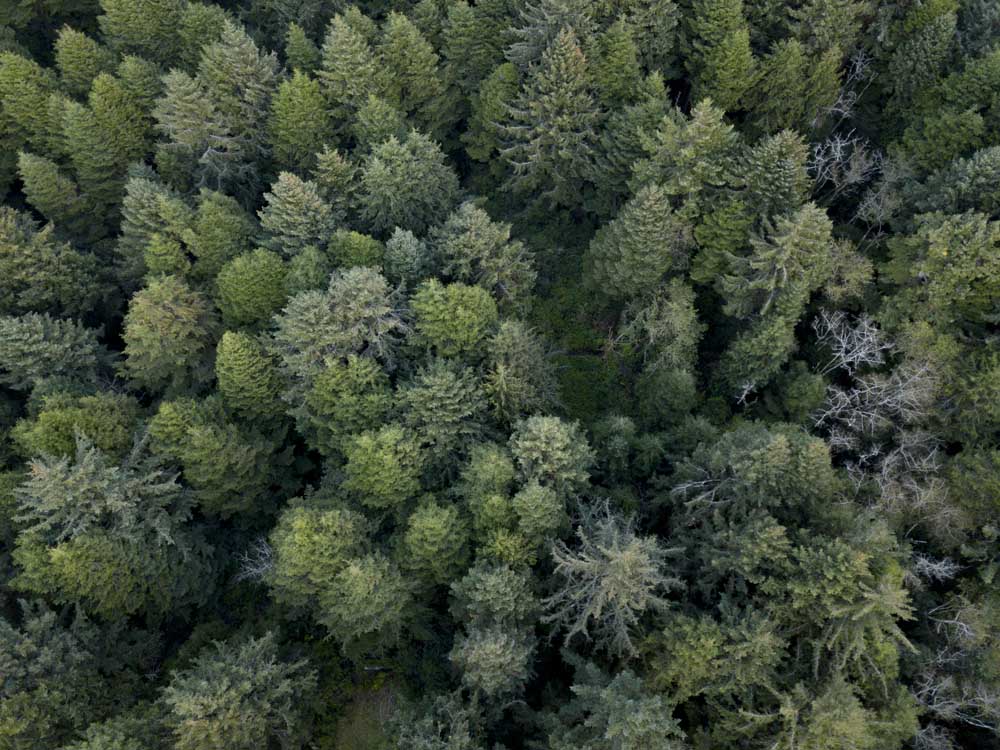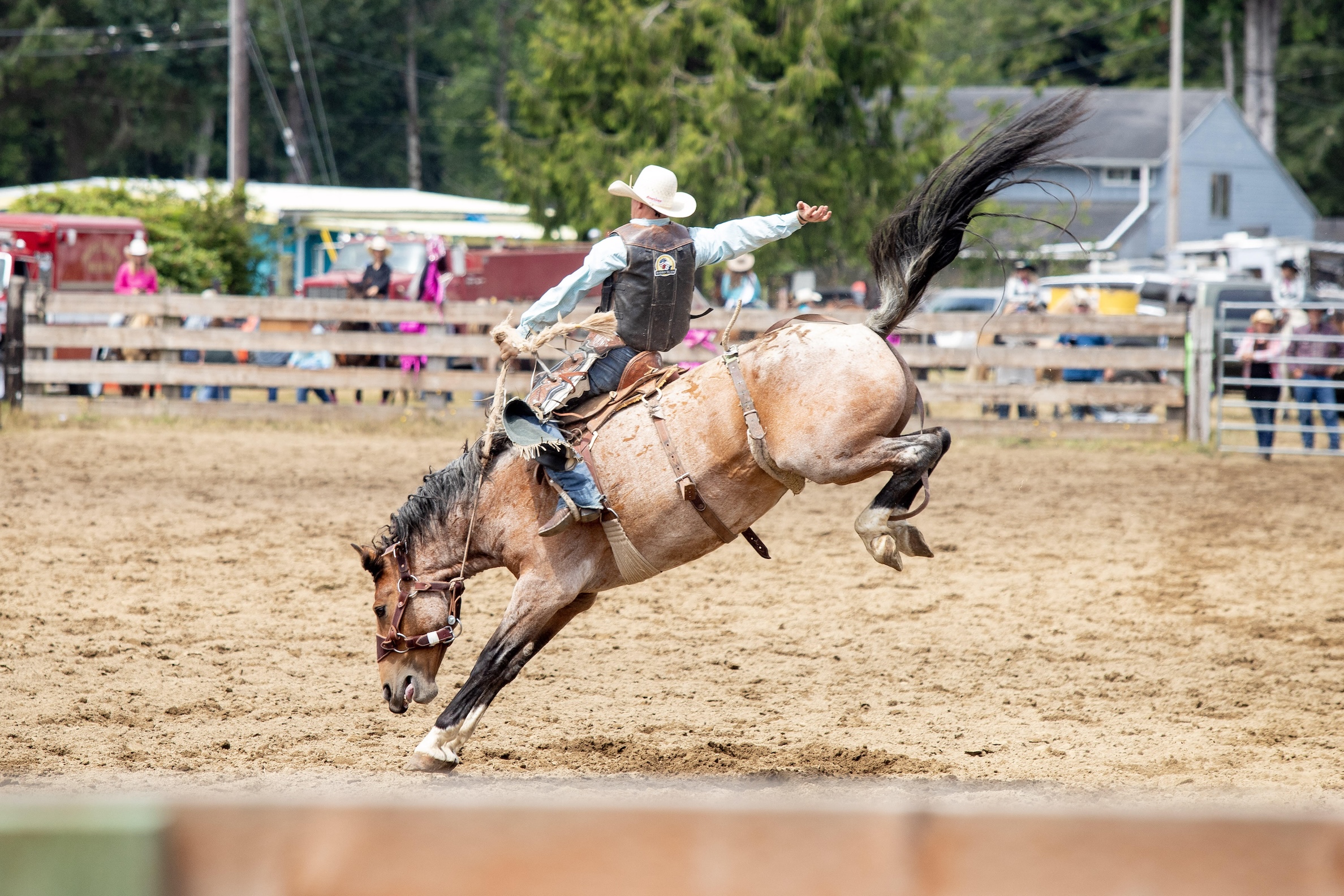Native plants of the Columbia-Pacific region
Published 12:15 am Monday, March 20, 2023

- A lush, green forest as seen from above.
Lush, biodiverse forestlands, teeming meadows and seashores of the Columbia-Pacific region persist as the seasons change. From great conifer forests to winding freshwater rivers and ocean beaches, locals and visitors enjoy abundant, diverse habitats.
Trending
At every turn of the season, native plants grow throughout the coast’s varied landscapes. Wildflowers signal the spring, berries the summer and evergreen species remain through the fall and winter. Here are some native plants to encounter as you explore the coast.
Sitka spruce (Picea sitchensis)
Identified by the blue tint of its sharp, pointed needles, this is one of the coast’s most common conifer trees, abundant from Alaska to Northern California. Larger specimens have flaky or scaly bark.
Trending
Much of the region’s old-growth Sitka spruce forest was cut down during the early 20th century, but a few old trees may still be found at Willapa National Wildlife Refuge and Oswald West State Park.
Western hemlock (Tsuga heterophylla)
Find a conifer with small green needles, each less than an inch long and arranged in two lines on either side of the twig and it’s probably a hemlock tree.
The tree’s top also flops over, producing small cones. Most do not exceed an inch in length.
Western red-cedar (Thuja plicata)
Flat, scaly needles and stringy red bark, often with pale green lichens dusting the surface, mark this signature Northwest tree. Like other conifers, most older trees have long ago been logged, but ancient giants still exist on some hidden trails and in protected areas.
Shore pine (Pinus contorta)
This regional subspecies of lodgepole pine tree is often found short and twisted along the beach due to high winds but straightens up further inland. Look for needles not exceeding three inches long, with two growing together out of the same spot.
Shore pines grow all along the beach, particularly in areas bordering dune grass. A visit to Leadbetter Point State Park offers a view of its contorted and straight variations.
Red alder (Alnus rubra)
One of the most common deciduous trees in the region, pale bark with patches of dark moss means that this tree is often mistaken for a birch. Many young, slender trees grow tall along riparian zones and in clearings.
In spring, it grows oval-shaped green leaves with serrated edges and a pointed tip. It also has catkins that look similar to tiny conifer cones. Cape Disappointment State Park has a particularly healthy population, especially on the west side.
Pacific wax myrtle (Myrica californica)
A hardy evergreen shrub or small tree that resembles but is not closely related to rhododendrons and azaleas, the Pacific wax myrtle has waxy, dark green leaves that are slender and oval.
These leaves sometimes have small black spots and serrated edges. The tree’s inedible berries, which turn a shade of purple when ripe, grow in clusters along its branches. The Pacific wax myrtle is often found in conifer forests. Fort Stevens State Park is a great spot to find this plant.
Salal (Gaultheria shallon)
Encounter this leafy evergreen plant along almost any coastal trail. Its large, oval leaves feature finely-serrated edges and pointed tips. They are dark green on top and pale green underneath.
Salal twigs have a pinkish cast, marked with white, bell-shaped flowers that grow in rows. In summer, these turn into berries that grow in a black or dark blue shade. Salal may grow in dense thickets, especially in clearings, though it also occurs in forested areas.
Evergreen huckleberry (Vaccinium ovatum)
Often found close to salal, this evergreen shrub also features oval-shaped, serrated leaves. These, however, are much smaller and have a darker green hue than those of salal plants.
The evergreen huckleberry plant has small, bell-shaped white or pink flowers that ripen into clusters of small, round berries and is a common part of coastal forest understories.
Licorice fern (Polypodium glycyrrhiza)
Bunches of ferns growing on the trunks or branches of trees along local trails are likely to be licorice ferns. Named for the licorice-like flavor of its rhizome, this plant is only found west of the Cascade Mountains in coastal regions.
The size of the fern’s leaflets may match those of closely related sword ferns, but the overall plant tends to be on the small side. Any mature mixed conifer forest will have an abundance of licorice ferns growing on moss-covered trees.
Slough sedge (Carex obnupta)
One of several similar local species, slough sedge commonly grows in seasonal and year-round wetlands. While it may look similar to a large clump of beach grass, its long leaves have decidedly sharp edges and its seed clusters are dark brown and drooping. It can grow densely in areas with enough space.
American dune grass (Leymus mollis)
This native beach grass is a rather rare species. The wide swaths of grass growing on local dunes of Oregon’s North Coast and Washington’s Long Beach Peninsula are mostly composed of invasive species.
Native grasses grow in clumps with plenty of space in between that allows other plants to grow, and birds and other animals to nest. Still, these grasses rest in areas of Leadbetter Point State Park.
Western yellow pond lily (Nuphar polysepala)
The white water lilies often found locally are not native species. However, look for the large leaves of native yellow pond lilies growing around the edges of lakes and ponds. In summer it produces large, globe-shaped yellow flowers that are stunning to behold.
Pearly everlasting (Anaphalis margaritacea)
Blooming late in summer, this wildflower produces clusters of small, round flowers that are white with bright yellow centers. Even when not in bloom, this plant is easily recognizable by its pale gray-green hue, small lance-shaped leaves and brittle stem. It commonly grows in meadows and on sand dunes.
Yarrow (Achillea millefolium)
This common wildflower has narrow, feathery leaves that are soft to the touch. When it blooms, it produces disc-shaped clusters of tiny white flowers. It is quite cosmopolitan and will grow anywhere from sea level to the tops of the Coast Range Mountains.
Beach strawberry (Fragaria chiloensis)
This berry looks much like a smaller version of a cultivated strawberry —unsurprising given that it was hybridized with the eastern wild strawberry to create the domesticated cultivar. Its white five-petaled flowers produce small red berries, and its triplets of green leaves persist year-round. It is widespread in dunes, meadows and forests.
Yellow sand verbena (Abronia latifolia)
Walk along the beach in warmer months to see hemispherical clusters of tiny yellow flowers growing amidst dark green, round leaves, all close to the sand. This plant used to be more plentiful before beach grass filled the dunes.
Should one see an almost identical plant but with pink flowers, they may have found the rare pink sand verbena. It grows in some spots at the northern end of Leadbetter Point State Park.









